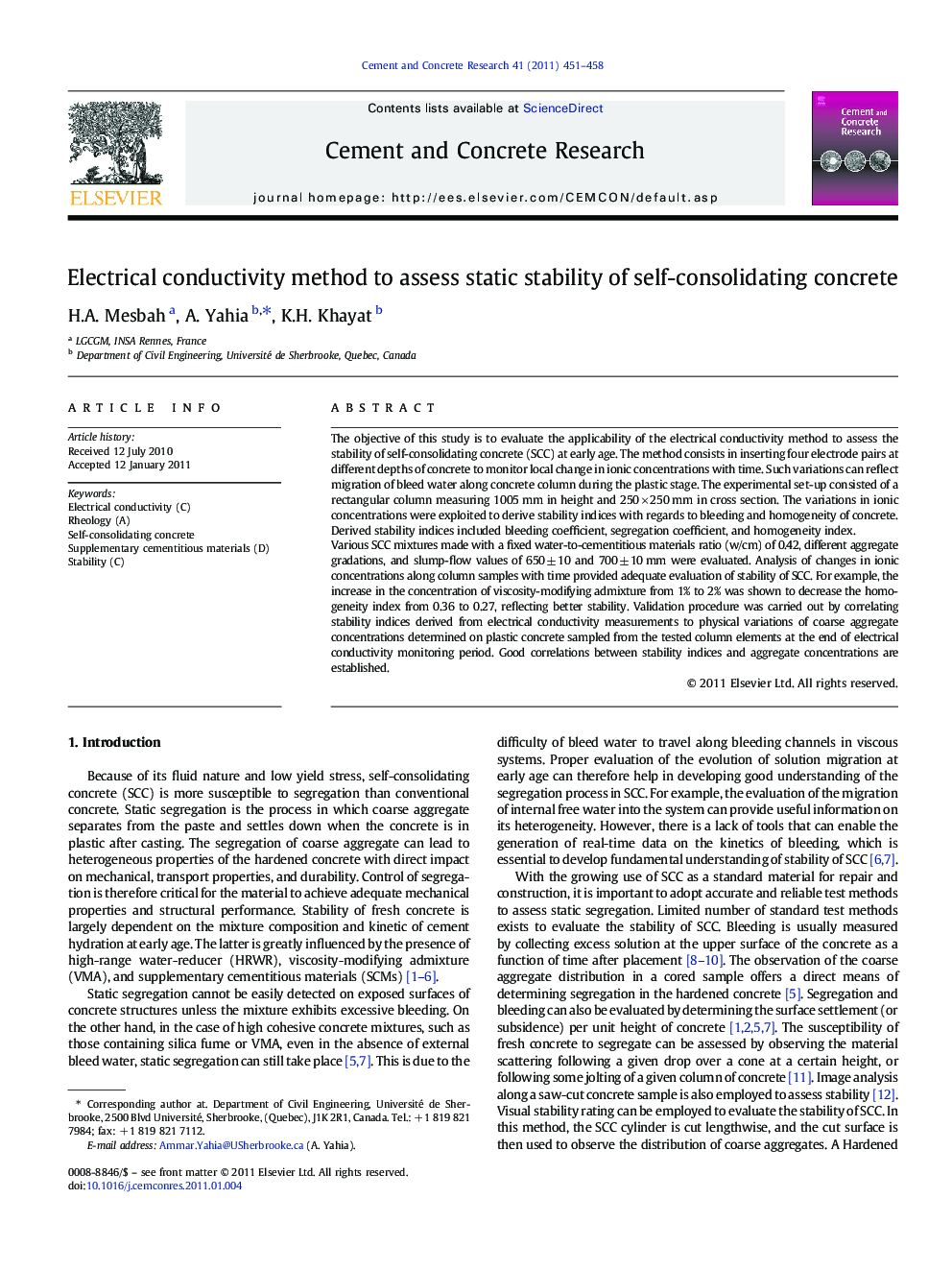| Article ID | Journal | Published Year | Pages | File Type |
|---|---|---|---|---|
| 1456881 | Cement and Concrete Research | 2011 | 8 Pages |
The objective of this study is to evaluate the applicability of the electrical conductivity method to assess the stability of self-consolidating concrete (SCC) at early age. The method consists in inserting four electrode pairs at different depths of concrete to monitor local change in ionic concentrations with time. Such variations can reflect migration of bleed water along concrete column during the plastic stage. The experimental set-up consisted of a rectangular column measuring 1005 mm in height and 250 × 250 mm in cross section. The variations in ionic concentrations were exploited to derive stability indices with regards to bleeding and homogeneity of concrete. Derived stability indices included bleeding coefficient, segregation coefficient, and homogeneity index.Various SCC mixtures made with a fixed water-to-cementitious materials ratio (w/cm) of 0.42, different aggregate gradations, and slump-flow values of 650 ± 10 and 700 ± 10 mm were evaluated. Analysis of changes in ionic concentrations along column samples with time provided adequate evaluation of stability of SCC. For example, the increase in the concentration of viscosity-modifying admixture from 1% to 2% was shown to decrease the homogeneity index from 0.36 to 0.27, reflecting better stability. Validation procedure was carried out by correlating stability indices derived from electrical conductivity measurements to physical variations of coarse aggregate concentrations determined on plastic concrete sampled from the tested column elements at the end of electrical conductivity monitoring period. Good correlations between stability indices and aggregate concentrations are established.
